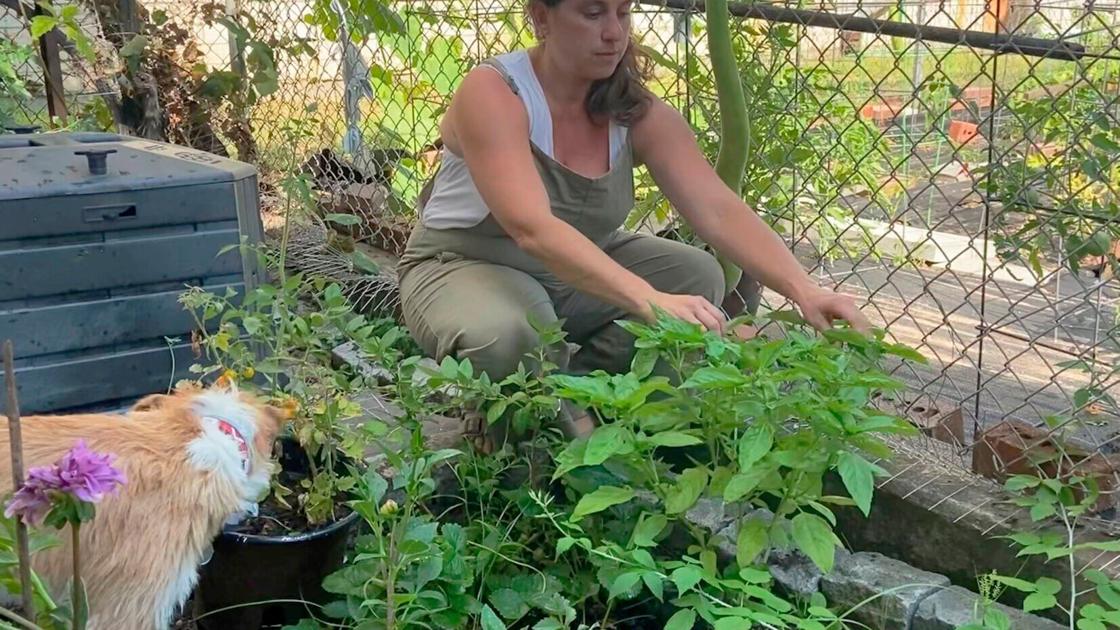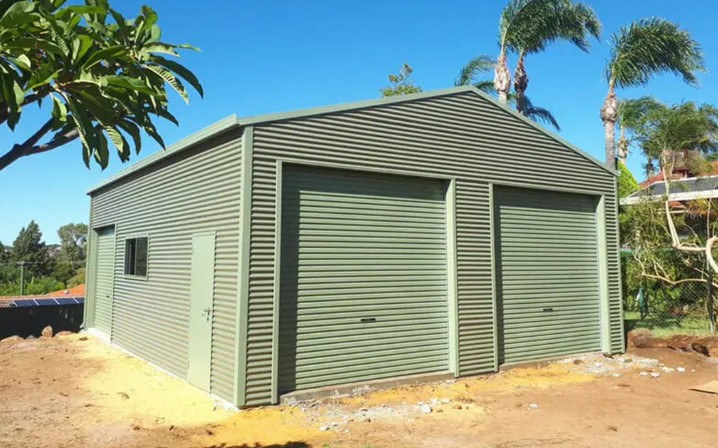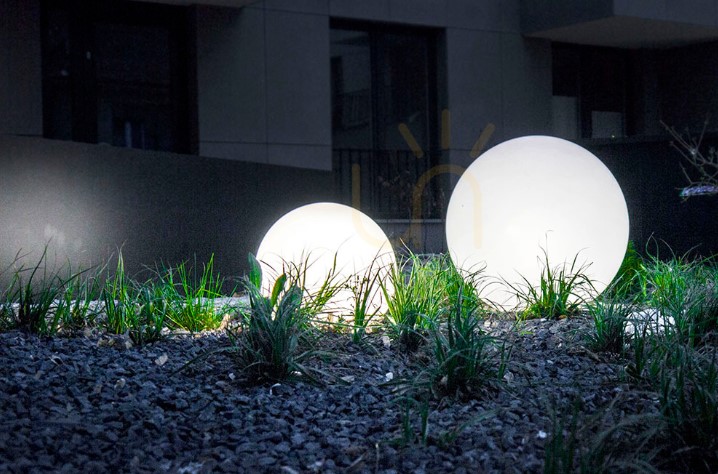For hire or food, garden sitters save the day during summer | Home & Garden


This photo shows the garden of Kyle Good and Gerald Singer in Garrison, N.Y. on Aug. 8, 2022. The couple asked their friend Jackie Grant to care for their garden during a recent vacation. (Gerald Singer via AP).
NEW YORK (AP) — Take my chard, please!
The season has come when many home gardeners, their numbers booming since the pandemic began, are being rewarded with fully matured, ready-to-pick vegetables and flowers. It’s also vacation season, and this summer travel is back.
How do you maintain your garden and take advantage of all that homegrown goodness during extended trips away? Even experienced gardeners can end up with more tomatoes, beans and zucchini than they’d expected come late summer.
Garden sitters are one answer.
Some home gardeners hire professionals, while many just rely on neighbors and hope for the best.
“It’s really hard to leave the garden,” said Theresa Fiumano-Rhatigan, a longtime home gardener in Brooklyn. She relies on her parents and other nearby relatives as garden sitters during her five weeks each summer in Cape Cod, Massachusetts. “Nobody does it quite like I do.”
People are also reading…

This photo shows Theresa Fiumano-Rhatigan in her Brooklyn garden on Aug. 8, 2022. The seasoned home gardener relies on family members to care for her garden when she’s away for extended periods. (Kerry Butts via AP)
Having an experienced sitter who isn’t afraid to take control can help. Avoid a free-for-all of inexperienced neighbors and friends traipsing through to pick what they want with no care given to the plants and no idea when to water.
“The first thing is to find one friend with a garden you like and make sure you’re willing to return the favor,” said Adam Choper, associate director for outdoor gardens and sustainable horticulture at the New York Botanical Garden in the Bronx.
He suggests walking your garden sitter through the process beforehand to make sure things are done just right. Setting up sprinklers or soaker hoses will make things easier while you’re away. For container gardens, group the containers together in the shade so your plants won’t dry out as quickly if your vacation is just a week or two, Choper said. Some gardeners place containers in kiddy pools with water that a garden sitter need only fill up if necessary.

This Aug. 12, 2022, photo shows, from left, Garden sitter Jono Waks, left, with Lev Guttenberg, from second left, Tal Guttenberg, Zoe Guttenberg and Doug Guttenberg at the Scholes Street Children’s Garden in the Brooklyn borough of New York. The Guttenberg family leaves the care of their community plot and backyard garden to their neighbor, Waks, when they spend a month at their Detroit home each summer. (Jono Waks via AP).
Choper also recommends putting down mulch before heading out for long periods. That helps the soil conserve water and keeps weeds at bay.
For gardeners without trusted neighbors or loved ones, garden sitters for hire are abundant on local online message boards or at nurseries and horticultural societies.
Rachel Mulkerin tends to about 3,000 square feet of garden space on her 9-acre property in Sherman, Connecticut, and has hired special needs helpers she found through her mother, a former adult education teacher.
“It’s a wildly mutually beneficial arrangement,” she said.
Mulkerin uses about half of what she produces for herself and her family and gives away the rest to those in need in her community.
Through time, gardens have offered a sense of safety and comfort, so entrusting them to others can be difficult, said Ambra Edwards, a gardening historian and co-author of “The Story of Gardening.”
Edwards, who gardens herself in England’s rural Dorset, considers holiday a reprieve from the toil, but she knows a lot of manic gardeners who can’t tear themselves away.
“I’ve got one friend in particular and she has to travel a lot. She travels the length and breadth of the country. And when she does, she takes all her vegetable plants, all her sweet peas and a particular myrtle in a pot that she got from a very dear friend, now deceased, and loads them in the car. They go with her. She’s the snail carrying a house,” Edwards said.
Gardeners, generally speaking, are sharers, and sharing vegetables while away not only produces more after picking, but also avoids rotting tomatoes and other crops.
“Rotten tomatoes will cause other tomatoes to rot, and they’re also really smelly,” Choper said.
Some vegetables, like cucumbers and zucchini, need to be picked so they don’t grow into monsters that aren’t as pleasant to eat.

Jackie Grant, from left, Tammy Amsalem, Carol Marquand, Cathy Lilburne, Susan Freeman and Millie Solomon appear at Lilburne’s home in Garrison, N.Y. on Aug. 8, 2022. Grant’s fellow book club members were the recipients of her chard gratin, made with chard from the garden of a friend for whom she was “garden sitting.” (Chris Bockelman via AP).
A designated garden sitter can take what they want and leave the rest on a front porch or at the end of a driveway after putting out the word of free fresh food.
Heather Grabin in Hampton, New Jersey, has 10 garden plots on her 40-acre property. She also owns a cafe in a city an hour away that doesn’t have access to much fresh produce. She uses her vegetables and herbs at her restaurant, and sells some of her excess there at low cost.
Grabin had to delay a three-week trip to California this year because of a new school schedule for her two kids. By the time she and her family left, her tomatoes and zucchini were abundant. With such an overwhelming amount, she went the hired garden sitter route.
“It’s different when you’re doing it yourself versus when you have to ask someone else to do it for you,” she said. “He’s been flash freezing everything. It’s a lot.”
Doug Guttenberg and his wife, Tal, grow herbs in their backyard and vegetables in a community garden plot just a few minutes from their Brooklyn home. They also own a house in Detroit and spend a month in Michigan every summer. They entrust their Brooklyn plants to a neighbor, a fellow gardener, and know firsthand what happens without a sitter after choosing to forgo one last year.
“When we came back, the cucumbers had attacked everything,” Tal said. “It was like this tornado of cucumbers. It was a bit crazy, and they didn’t even fruit. I mean, no cucumbers came of it.”
5 common ailments in vegetable gardens and how to treat them
Garden threats

This image provided by University of Maryland Extension shows anthracnose disease symptoms of a bush bean.
You started seeds in spring and watched as they sprouted, then watered, fertilized and even staked plants as they grew, while visions of summer salads, grilled vegetables and homemade pickles danced in your head.
Then one day, black blotches, yellow-spotted leaves and mushy bottoms showed up, and your dreams turned to nightmares.
Many home gardeners lovingly tend their plants only to find them ravaged by unknown forces before harvest time.
But fear not: Here are some tips for identifying and treating five of the most common ailments that threaten your crops.
Anthracnose

This image shows a pumpkin with lesions symptomatic of anthracnose, a serious fungal disease affecting crops like beans, cucumbers, eggplants, melons, peas, peppers, tomatoes, pumpkins and spinach.
A fungal disease that affects beans, cucumbers, eggplants, melons, peas, peppers, tomatoes, pumpkins and spinach. Anthracnose presents as small leaf spots with yellow halos that gradually darken and spread to cover entire leaves. On cucumber plants, foliage may drop, and entire vines may die. Tomatoes and peppers exhibit dark, sunken spots that become more apparent as fruit matures. Pea pods become marred with dark lesions. Round, sunken, yellow spots appear on melons, darkening to brown and then black.
To prevent this, try rotating crops, amending soil with compost before planting and applying mulch afterward. Seek out resistant plant varieties, when available. Avoid overhead watering, which wets foliage and encourages fungal growth. And keep the soil clear of infected plant parts and fallen fruit.
Treat infected plants with a fungicide containing chlorothalonil or copper, carefully following the instructions and safety precautions on the package.
Blossom end rot
Caused by a calcium deficiency that mainly affects tomatoes, eggplant and peppers. Characterized by dark, mushy spots on fruit bottoms, the disorder typically results from inconsistent watering, improper soil pH, injured roots or excess nitrogen.
Prevention measures include testing the soil’s pH before planting. If results are lower than 6.3, incorporate dolomitic lime into beds according to label directions.
Avoid damaging the roots by installing stakes and cages around tomatoes at planting time, instead of when plants — and roots — are larger. And don’t plant a vegetable garden in or near a lawn that receives fertilizer, which can raise the nitrogen level of the surrounding soil.
Treat affected plants by drenching leaves with a calcium spray until the product drips off. Fruit produced after treatment is usually symptom-free, although sometimes a second application is necessary.
Squash vine borer

This image shows a squash vine borer larva and its telltale “frass” excrement inside a hollow squash stem.
Zucchini, squash, cucumber and muskmelon plants die quickly after blooming, without so much as a goodbye. But if you look closely, you’ll see the small puncture holes in the bottoms of stalks and stems caused by these pests, which start life as moths that lay eggs at the base of plants. Inch-long white caterpillars follow and bore into stalks, killing plants as they chew their way around and out. And just when you think the damage is done, they cocoon in the soil until the following year, armed and ready to repeat the carnage.
Prevent damage by monitoring susceptible plants closely. Watch for red, flat, oval eggs early in the season and pick them off by hand. Keep hunting every week.
And if you find signs of damage like punctures and frass, their sawdust-like excrement, use a razor blade to slice affected stems open near the holes and manually pick out the borers. Cover the slits with mounded soil to encourage new root growth.
If necessary, treat plants with Bacillus thuringiensis, or Bt, a bacterial insecticide (several versions are available; seek the one labeled as a control against squash vine borer).
Wilt diseases
Verticillium and fusarium wilt are soil-borne fungal diseases caused by different pathogens that result in similar symptoms.
Primarily affecting eggplants, peppers, potatoes, pumpkins and tomatoes, the diseases ravage roots, resulting in curled, yellow and wilted foliage, brown xylem tissue inside stems and overall stunting. Eventually, entire plants wilt and die.
This is one instance where a good offense is the only defense: Avoid infection by planting resistant varieties (check plant tags for V, F, VF or VFN, resistance indicators for verticillium wilt, fusarium wilt and nematodes). Rotate crops by keeping infected beds free of susceptible plant species for three or four years, essentially starving the disease of a host to clear the pathogen from the soil. And regularly clean up fallen leaves, fruit and plant debris.
Slugs

A slug nibbles at the leaf of a hosta in a garden in this 2007 file photo.
Jagged holes, typically in leaf centers rather than edges, indicate slug damage. The nocturnal gastropods feast on basil, cabbage, cucumbers, lettuce, tomatoes, peppers, and ornamental plants like hostas, leaving a telltale slimy trail behind.
Get ahead of the slithering miscreants with a spring cleanup that clears leaves, plant debris and slug eggs from the soil surface, and keep mulch no deeper than 3 inches to avoid creating a haven.
Sink a small can or jar into the soil around affected plants, leaving about an inch exposed above ground, then fill it halfway with beer. Slugs will crawl in for a drink and drown. Alternately, if you aren’t squeamish, you might go into the garden at feeding time (overnight) and sprinkle a bit of salt on each of your little visitors. As their bodies attempt to dilute the irritant, slugs will dehydrate and die. But don’t be tempted to sprinkle salt around plants. Doing so would risk damaging the soil.






